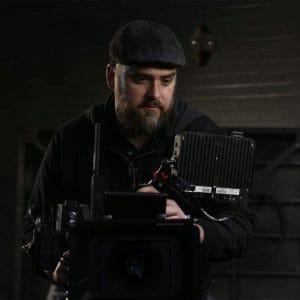Look Out FX9! The Canon C300 Mark III Is About To Drop
Yes, it’s true. The Canon C300 Mark III is about to drop people!
Now I don’t want to start this out busting Canon’s balls here, but it’s about damn time my friends! — I say that with love. But seriously, Internal 4k RAW capture at 120fps — Thank you very much! And that’s not all, this camera comes jam packed with awesome key features that will make any DP’s head spin around and think twice before purchasing that Sony FX9.
I heard some rumors floating around in the ether about this camera, but I wasn’t prepared for these impressive specs to come with such a competitive and accessible price tag.
But at the end of the day it took them forever to get here. Did they arrive too late?
Let’s take a look at it!

Improvements
High Frame Rates
Right off the bat I’m going to bring it up again. We’ve been waiting so long for Canon to drop a 4K camera with the ability to capture 120fps using 100% of the sensor for a price tag around 10K (That’s a mouthful, I know). There’s always been little to no high speed capabilities that utilized the entirety of the sensor without cropping and running the risk of a noisier image.
When the C500 mark II dropped with it’s 5.9k sensor, it was only packing 120 fps at 2K resolution which left many scratching their heads. Same goes for the Canon C700. We got 72 — That was still an improvement from 60, but it was only in 4K and it was still cropping the sensor.
C700 RAW Recording Format

Now, thankfully our griping has been heard and the C300 Mark III is their response. And it’s also worth noting that you can shoot up to 180 fps in 2K which is super useful when you’re finishing in 1080 and 120 fps isn’t quite cutting it.
C300 MkIII Recording Formats
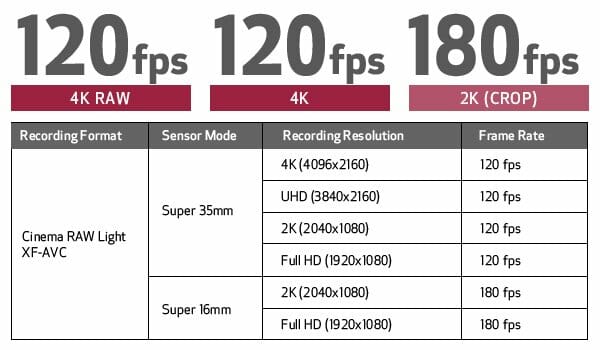
Body Design
One thing that was always a point of defeat for the C300 series next to Sony’s FX cameras — was their body design. It was never ergonomic and conveniently designed like the FX cameras were. As soon as the C500 Mark II and the C700 dropped, it was clear that Canon answered the prayers of many loyal consumers. The design definitely reminds me of an FX camera and seems way more practical. Now the C300 series has adopted this same design and we’re all happy they did. It’s almost exact to the C500 MkII.
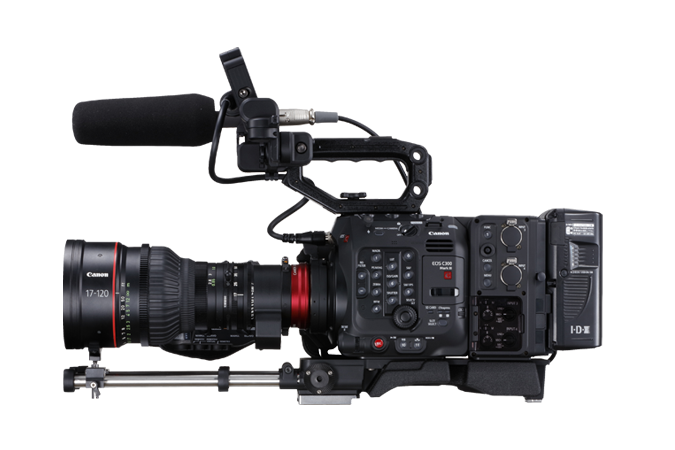
New Super 35mm DGO Sensor
When I heard about Canon’s new sensor, I got really excited. The Super 35mm Dual Gain Output (DGO) sensor at a size of 26.2 x 13.8 is capable of dynamic ranges in excess of 16 stops and is compatible with Canon’s exclusive Dual Pixel CMOS Autofocus technology according to Canon. Shooting Canon log 2 will give you full use of the 16+ stops of dynamic range while using Canon Log 3 drops you down to 14 stops of DR.

They just recently developed this imaging system and it’s cutting edge (for canon). It generates high dynamic range and maintains low noise levels by reading out EACH pixel with different gains. That’s genius! By combining images using pixels shot with a saturation-prioritizing amplifier for bright areas and a lower-noise noise-prioritizing amplifier for darker areas, you get pristine exposure from low to highlight with close to no noise in your shadows. I can’t wait to get my hands on this camera and see what the limits of this sensor are and how closely it compares to other sensors like Arri’s Alev III.
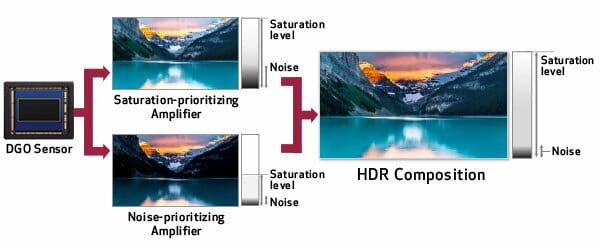
Like the Mark II, there’s no oversampling involved so you’ll be capturing 4K imagery that has a softer touch and feels a little more cinematic and less digital. Check out the example below — behind-the-scenes of ‘Boneyard Ballet’ and see what I mean.
Super 35mm
4K: 26.2 x 13.8 (29.6 mm diagonal)
UHD: 4K: 24.6 x 13.8 (28.2 mm diagonal)
Total Pixels – Approx. 9.6 Megapixels (4206×2280)
Effective Pixels – Approx. 8.85 Megapixels (4096×2160)
Sensor Modes:
Super 35mm
Super 16mm (cropped)
Progressive Scan

5 axis Image stabilization
Like it’s older brother, the C500 — the C300 Mark III includes built-in 5-axis electronic image stabilization. Many are against IS features like this due to it’s manipulation of the picture and the inevitable loss of quality to do so, but from what I’m seeing in some of the examples, that loss of quality is not noticeable to the human eye.
The data from the onboard gyroscopic sensor communicates with the Digic DV7 processor which then makes high speed calculations that instruct the repositioning of the selected active image area.
We first saw IS with the Canon EOS R5, then we saw a more advanced version of this IS system with the C500 MkII which is what the C300 MkIII comes equipped with. The camera is intuitive enough to utilize all 5 axis when coupled with a lens with no IS and works in tandem with a lens that does by dealing with only the axis (Roll, X/Y) that the lens IS (Yaw, Pitch) lacks.
The lens’s focal length is automatically or manually set to help the system adjust properly to the digital IS. It’s worth noting that this IS system is compatible with anamorphic lenses.

Internal cinema RAW Light
No longer do you have to record uncompressed RAW though dual 3G-SDI outputs to an external recorder. Now with the DIGIC DV7 image processor, the C300 MkIII can record Cinema RAW Light directly to onboard CF Express cards which is huge! You get so much more freedom in post when grading as opposed to the XF-AVC codec.
The Dual Gain Output (DGO) technology produces 16+ stops of dynamic range while maintaining file sizes that are about 1/5 to 1/3 the size of Canon Cinema RAW. This gives you the same efficiency/quality while saving space and money.
This is another internal option we’ve been begging for, for some time now. It’s great to see it come to fruition and is something that will change the game when it comes to competing with the Sony FX line of cameras. I think it might be tilting in Canon’s favor a bit. Their color technology has always been superior to Sony’s in my opinion.
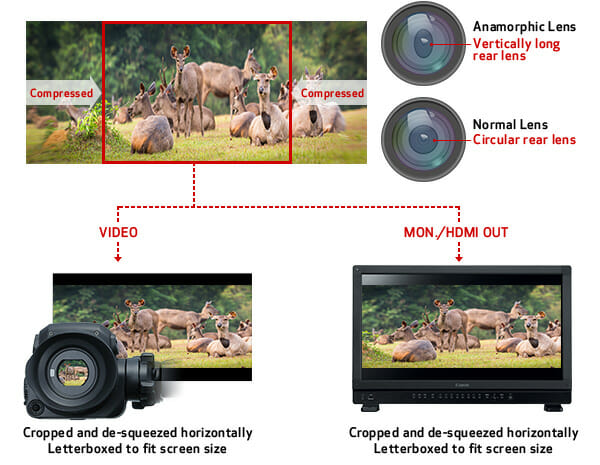
Anamorphic Lens support
I got really excited when I saw this. Another complaint that was answered with this camera was their ability to offer DPs support for both 2.0 and 1.33 Anamorphic lens types. This allows you to achieve beautiful cinematic imagery complete with vibrant flares and the much desired oval bokeh.
This is a big deal and sets the C300 MkIII apart from its competition in a massive way. Now more filmmakers are likely to take this camera more seriously as a back pocket tool and an A cam candidate for Narratives.

Interchangeable lens mount (Supports any lens)
Finally, they’ve got an interchangeable lens mount that works similar to cameras like RED and others where you unscrew and swap out the mount that you need. Comes stock with an EF mount, but can be changed to a Locking EF or PL mount. The purchase comes with shims that allow you to adjust back focus and dial in the accuracy necessary to execute on a professional level.

Key Features
4K – 120fps
Super 35mm Dual Gain Output (DGO) sensor
16+ stops of dynamic range.
Electronic Image Stabilization (5-axis)
DIGIC DV7 Image Processor
Internal Cinema RAW Light and XF-AVC (H.264) Recording
XAVC Long GOP and 4:2:2 10-bit
Proxy Recording
2K Crop 180fps
Canon Log 2 and 3
LM-V2 4.3′ LCD Touch Screen Monitor
4-Channel Audio Recording
12G SDI, 3G-SDI
Dual Pixel Autofocus
RC-V100 Support and LANC Compatible
Support for Custom User LUTs
Interchangeable lens mount (Supports any lens)
Anamorphic Lens Support
2x CF express slots
Internal NDs
Low Power Draw
Modular Design for Expansion Units
Examples
If you’re looking to see an example that demonstrates some of the features talked about above, then you need to check out this awesome behind-the-scenes video for Boneyard Ballet — a short film that explores the strengths and limits of the C300 MkIII. I work with the film’s 1st AC, DIT, and Ariel DP on a regular basis and they’re expertise on this camera is sound — without ever testing it for myself, I trust their opinions and you should too.
Behind the scenes of Boneyard Ballet
https://www.youtube.com/watch?v=Uf-ciwx3kCs
C300 MkIII First Look
https://www.youtube.com/watch?time_continue=6&v=BSyHk2Y1yrY&feature=emb_title
Specs
Imaging Sensor
Effective Pixels
4096×2160: when 4096 x 2160 or 2048 x 1080 is selected as the resolution (Approx. 8.85 megapixels)
3840 x 2160: when 3840 x 2160 or 1920 x 1080 is selected as the resolution (Approx. 8.29 megapixels)
Total Pixels
4206 x 2280; Approx. 9.6 megapixels
Sensor Type
CMOS
Sensor Size
Super 35mm
4K: 26.2 x 13.8 (29.6 mm diagonal)
UHD: 4K: 24.6 x 13.8 (28.2 mm diagonal)
Sensor Modes
Super 35mm, Super 16mm(cropped)
Pixel Pitch
6.4 μm
Scanning System
Progressive
Number of Sensors
1
Filter
RGB Primary Color Filter (Bayer Array)
Imaging Processor
DiG!C DV 7
Lens System
Lens Mount
Default Mount: EF
Optional: EF-C locking, PL
*All mounts are interchangeable
**Supports both EF and EF-S lens
Zoom/Focus Preset
Not Available
Shockless Zoom
Not Available
Digital Teleconverter
Not Available
ND Filter
Mechanical ND filter system with option of clear, 2, 4, and 6 stops; 8 and 10 stops in extended mode
Peripheral Illumination Correction
Available
Exposure and Metering
Exposure Modes
(1) Manual exposure based on shutter setting, iris setting, ISO/gain setting, and ND filter setting
(2) Push auto iris control, auto iris control
Metering Modes
Standard, Spotlight and Backlight
Gain
Normal Setting -6dB to 54dB TBD
Fine Setting -2dB to 54dB in 0.5 dB increments
ISO
100 to 102,400
Auto Gain Control (AGC)
Not Available
Shockless Gain
Not Available
Exposure Compensation/AE Shift
–2.0 to +2.0 in 0.25 point intervals
Shutter Modes
3 Modes: OFF; Speed; Angle; Slow Shutter; Clear Scan
Speed Mode is selected in 1/3 or 1/4 stop increments
Shutter Speed Range
59.94Hz/24.00Hz: 1/12 to 1/2000
50.00Hz: 1/12 to 1/2000
Shutter Angle Settings
59.94Hz/50.00Hz/24.00Hz: 360, 240, 180, 120, 90, 60, 45, 30, 22.5, 15, 11.25
Iris Settings (EF)
Can be set to 1/2 stop, 1/3 stop or Fine.
(1) Push auto iris control
(2) Auto iris control (Compatible lens required)
(1/2, 1/3 stop or fine setting can be selected)
Focus
Focus Control
Dual Pixel CMOS AF
Focus Modes
Manual focus, continuous AF, one-shot AF, AF-Boosted MF, face detection AF
Only lenses that support AF functions can be used in AF modes
External Recording Output
System Frequency
59.94 Hz, 50.00 Hz, 24.00 Hz
59.94 Hz mode: 59.94i/59.94P/29.97P/23.98P
50.00 Hz mode: 50.00i/50.00P/25.00P
24.00 Hz mode: 24.00P
Resolution
|
Mode |
Resolution |
Frame Rates |
|
Cinema RAW Light |
4096×2160 |
59.94p / 29.97p / 23.98p / 50.00p / 25.00p / 24.00p |
|
2048×1080 |
59.94p / 29.97p / 23.98p / 50.00p / 25.00p / 24.00p |
|
|
XF-AVC |
4096×2160 / 3840×2160 |
59.94p / 29.97p / 23.98p / 50.00p / 25.00p / 24.00p |
|
2048×1080 / 1920×1080 |
59.94p / 29.97p / 23.98p / 50.00p / 25.00p / 24.00p/ 59.94i / 50i |
|
|
1280×720 |
59.94p / 50p |
Color Gamuts
Cinema Gamut, BT.709, BT.2020
Gamma Curves
BT.709, Wide DR, Canon Log 2, Canon Log 3, PQ, HLG
Recording / Codec
Codecs
XF-AVC (10 bit 4:2:2 (CFexpress) or 8 bit 4:2:0 (SD card))
Cinema RAW Light (CFexpress)
Recording Media
CFexpress 2,0 (Type B) x 2 slots
SD Card (Still Images (JPEG), Custom Picture Data, Clip Metadata, and menu settings); SD/SDHC/SDXC Supported
Recording Time
|
|
Cinema RAW Light |
|||
|
CFexpressTM |
1 Gbps |
250 Mbps |
||
|
512 GB |
64 Minutes |
256 Minutes |
||
|
|
Intraframe |
|||
|
CFexpressTM |
810 Mbps |
410 Mbps |
310 Mbps |
160 Mbps |
|
512 GB |
79 Minutes |
156 Minutes |
207 Minutes |
401 Minutes |
|
|
Long GOP |
|||
|
CFexpressTM |
260 Mbps |
160 Mbps |
50 Mbps |
24 Mbps |
|
512 GB |
246 Minutes |
401 Minutes |
1284 Minutes |
2675 Minutes |
|
|
Long GOP |
|||
|
SD |
35 Mbps |
24 Mbps |
17 Mbps |
|
|
512 GB |
1945 Minutes |
2840 Minutes |
4010 Minutes |
|
File Format
XF-AVC: MXF (OP-1a)
RAW: CRM
File System
CFexpress: exFat
SDHC card: (up to 32 GB): FAT32
SDXC card (more than 32 GB): exFAT
File division unit: 4 GB for FAT32, none for exFAT
Maximum Clip Number
999 (per media)
Audio
Recording Format
Linear PCM; 4-Channel; 24-Bit; 48 kHz
Built-in Microphone
Monaural
External Audio Inputs
2 – XLR inputs (Auto and Manual level settings)
External microphone terminal: (3.5 mm diameter)
Recording Channel Selection
Up to 4 channel audio recording is supported.
XLR Mic Trimming
Available; -12dB, -6 dB, 0dB or +12 dB
Limiter
Available
Recording Level Adjustment Range
– Infinity to +18dB
Phantom Power
Available; +48V
Headphone Adjustment
16 Settings; Volume is muted at lowest setting
Built-in Speaker
Available; Volume Adjustable
1KHz Tone
Available (off, -12, -18, or -20 dB)
Features and Performance
Playback
Clip Display: 3×4 Index Display.
Clip Playback: Forward Search (x5, x15, x60), Reverse Search (x5, x15, x60), Forward frame Advance, Reverse Frame Advance, Record Review, Skip to next clip, skip to previous clip
Clip information Display: Clip Metadata display, custom picture settings
Playback Functions: Clip Delete
Photo Playback: index, single playback, delete, protect
Slow and Fast Motion Recording
Available; Records at a different frame rate then the playback rate allowing for fast and slow motion effects:
|
Sensor Mode |
Recording Mode |
Available Frame Rates |
||||
|
Super35 |
Cinema RAW Light |
|
||||
|
Super16(Crop) |
Cinema RAW Light |
|
||||
|
Super35 |
XF-AVC |
|
||||
|
Super16(Crop) |
XF-AVC |
|
Special Recording Functions
Relay Recording*; Double-Slot Recording**
* Not available during Slow Motion recording
** Not available in combination with Slow and fast motion recording or relay recording
Photo Recording Mode
Available; Images captured to SD Card
Waveform Monitor
Available (HDR Compatible);
(a) Line display
(b) Line + spot: Line display over a red waveform in a red frame.
(c) Line select display
(d) RGB (parade)
(e) YPrPb (parade)
Output gain can be selected as either 1x or 2x. With gain set to 2x, the vertical axis (Y-position) offset value can be chosen.
When gamma is set to PQ, an PQ index (nits index) can be displayed. When gamma is set to HLG, an HLG index (0.0–1.0 relative index) can be displayed.
Vectorscope
Available
False Color
Available
Exposure / Focus Aids
Peaking (2 types), Zebra Pattern, Magnify, Black and White Mode, Focus Guide
Frame Record
Not Available
Pre-Record
Yes, 3 seconds cache (Audio and Video)
Time code
Drop Frame (DF) and Non-Drop Frame (NDF)
Time Code Modes
Regeneration, Record Run, Free Run and External Source
Auto White Balance (AWB)
Available
White Balance
Kelvin Setting:
2,000K to 15,000K in 100K increment
-20CC to +20CC in 1 CC increments
White Balance Presets
Daylight (5,600K); Tungsten (3,200K), Custom A, Custom B
Auto Black Balance
Available
Custom Picture Settings
20 Custom Picture settings
Custom pictures can be adjusted using the following settings and saved for later recall:
Gamma, Black, Black Gamma, Low Key Saturation, Knee, Sharpness, Noise Reduction, Skin Detail, Selective Noise Reduction, Color Matrix, White Balance, Color Correction, Setup Level
Custom Pictures can be saved to an SD card for later use or transferring between cameras
Custom Display
Yes; LCD panel and EVF information display can be customized
On Screen Markers
Available marker options include center, horizontal, grid, aspect, safety zone, and user marker.
With user markers, users can set their preferred size and position.
Markers can be displayed in yellow, blue, green, red, black, gray, or white.
Assign Buttons
18 total assignable button (15 assign buttons provided on camera body, 1 on the grip and 2 buttons on the monitor unit)
Color Bars
Color bars compliant with SMPTE, EBU, or ARIB standards can be selected depending on system frequency selected
Sensitivity
59.94 Hz: f/10 (2048×1080/59.94P) or f/14 (1920×1080/29.97P)
50.00 Hz: f/11 (2048×1080/50.00P) or f/16 (1920×1080/25.00P)
All values for ISO 800, 2000 lux, and reflectance rate of 89.9%
Dynamic Range
Canon Log 2: 1600% / 16+ stops (ISO 800)
Canon Log 3: 1600% / 14 stops (ISO 800)
LCD Monitor
Type
4.3-inch (10.9 cm diagonal) color wide-screen LCD
Approx. 2,760,000 dots (1280 x RGB x 720),
Aspect Ratio
16:9
Field of View Coverage
100%
Display Adjustments
Brightness, Contrast, Color, Sharpness, and Luminance
Input/Output
SDI Out
HD: SMPTE 292
3G: SMPTE 424, SMPTE 425
6G: SMPTE ST 2081
12G: SMPTE ST 2082
Audio: SMPTE ST 299
BNC Connector, output only
Monitor Out
Available
Resolution: 2048×1080 / 1920×1080
Frame Rates: 23.98p/24.00p/25.00p/29.97p/30p/59.94p/50p/60p
Time code In/Out
Yes; BNC Connector (Input and Output)
Genlock
Supported when optional expansion unit EU-V1 or EU-V2 in attached (Shares function with Synch Out)
Adjustment range: -1023 to +1023
Synch Out
Supported when optional expansion unit EU-V1 or EU-V2 in attached (Shares function with Genlock)
HD tri-level signal (HD Sync) 1920×1080: 59.94i/50i/23.98/24.00, 1280×720: 59.94p/50p/23.98, 24.00
HDMI
Yes (Type A)
[4096×2160/3840×2160]/1920×1080/1280×720
Audio Input Terminal
2 – Balanced 3-pin XLR (Mic Level, Mic Level with phantom power and Line Level)
3.5mm Microphone terminal
Headphone Jack
Available; 3.5mm stereo mini-jack
Remote Terminals
Remote A (Standard – LANC Compatible or RC-V100)
Remote B available In conjunction with expansion unit EU-V1 and EU-V2
Remote control through WFT-E9
USB
Available
CCU
Optional RC-V100
Power
Supply
14.4V DC (Battery Pack)
Power Terminal
DC IN 12V jack: DC 11.5V – 20V
DC 12–20V (using V-mount battery with EU-V2)
Battery
BP-A Series
Compact Power Adapter
CA-CP200B
Accessories
Tripod Adapter
Canon TA-100
Wi-Fi Adapter
WFT-E9
Expansion Units
EU-V1, EU-V2
EVF
EVF-V50, EVF-V70
Mounts
PL Mount Kit PM-V1, EF Cinema Lock Mount Kit CM-V1
Adapter
MO-4E (EF to B4), MO-4P (PL to B4)
Other
Dimensions
(Width x height x depth, excluding cable and grip belt)
Body Only: Approx. 153 x 148 x 168 mm (6.0 x 5.8 x 6.6 in.)
Body and Grip: Approx. 183 x 148 x 189 mm (7.2 x 5.8 x 7.4 in.)
Body, Grip, Handle, Mic Holder, LCD Monitor LM-V2 and Expansion Unit EU-V2: Approx. 343 x 277 x 333 mm (13.5 x 10.9 x 13.1 in)
Weight
EF Camera body (without Camera Grip GR-V1 or thumb rest) Approx. 1.75 kg ( 3.9 lb)*
*Body with PL Mount body; Approx. 2030g (4.5 lb.)
*Body with EF Cinema lock Mount body; Approx. 1860g (4.1 lb.)
Camera Grip GR-V1: Approx. 260 g (9.2 oz.)
LCD Monitor LM-V2: Approx. 204 g (7.2 oz.)
Handle unit: Approx. 227 g (8.0 oz.)
Battery Pack BP-A60: Approx. 434 g (15.3 oz.)
Compact Power Adapter CA-CP200B: Approx. 290 g (10.2 oz.) *Not including AC cable
Battery Charger CG-A20: Approx. 145 g (5.10 oz.)
Eyecap: Approx. 26 g ( 0.92 oz.)
Mic holder unit:Approx. 56 g ( 2.0 oz.)
LCD Attachment Unit LA-V2: Approx. 265 g (9.3 oz.)
Thumb rest: Approx. 9 g ( 0.32 oz.)
Extension System Attachment Bracket: Approx. 11 g (0.39 oz.)
Unit Cable UN-5: Approx. 80 g (2.8 oz.)
Body cap: Approx. 17 g (0.60 oz.)
Temperature and Humidity
Performance requirements: 0°C to 40°C, 85% (relative humidity)
Operating requirements: -5°C to 45°C, 60% (relative humidity)
Language Support
English, Japanese, Chinese, German, Spanish, French, Italian, Korean, Russian
Time and Date
Automatic Calendar range January 1st, 2020 through December 31, 2050
World Clock
World Clock support – UTC time setting: Setting range from +14:00 to -12:00
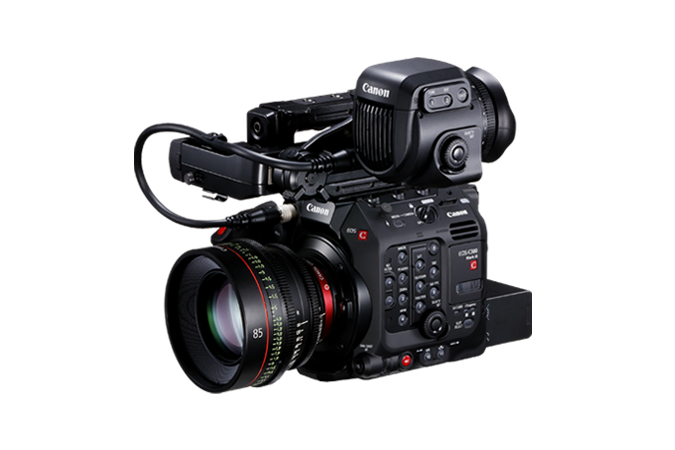
Comparison
The Sony FX9 utilizes a 6K sensor that records oversampled 4K footage, so what you’ll end up with is an image that looks more digital. That can be a plus for some if a sharper image is what you’re looking to achieve, but if you want that soft 35mm look that feels more cinematic, then the C300 MkIII is the obvious winner.
Beside that, the C300 MkIII is offering 120fps 4K RAW recording while the FX9 can only record 120fps in S35 mode, recording RAW QFHD 3840×2160, but this is only available with future firmware updates and an external XDCA-FX9 extension unit with a single BNC cable connection to compatible external RAW recorders. I’d say Canon wins for not forcing you to utilize/purchase an external recorder/extension.
When it comes to the body design, no longer do the Sony FX cameras dominate in the ergonomics category, Canon has stepped it up and delivered a construction that is efficient for accessories, stabilization and weight distribution.
The C300 MkIII is only $1 more than the FX9. This makes it really competitive, but has many wondering — Did Canon miss the moat? The FX9 has been out for a while now and I’m sure many C300 MkII owners crossed over and jumped ship. I’ve even read that some think they should have released the C300 MkIII alongside the C500 MkII, but it is what it is. In my opinion, I think the camera will contend well against the FX9 and other competitors under 12K regardless of the late arrival.
The C300 MkIII offers the Dual Gain Output with their sensor and the Sony FX9 offers Dual Base ISO. Both might sound like they’re doing the same thing, but they’re really not. The Dual Gain Output creates an HDR image that reads out each pixel with different gains and this works with any ISO setting, but clearly works best with their base ISO. The Dual Base ISO works a little different. It’s not an HDR image persay, but it achieves one of the key functions — less noise. I’d have to play with both cameras before I came to a conclusion about which is better.
Possible Drawbacks
There’s not many drawbacks with this camera. I’d have to admit that I was reaching for the few that I came up with.
- Image stabilization doesn’t work with RAW recording. It only works when recording in XF-AVC or XAVC Long GOP.
- 2K (Super 16mm) crops the image and doesn’t oversample. Possibly due to keeping a consistent soft image.
- The internal NDs likely forced the designers to stray away from an RF mount and instead we have to pay $1600 for a PL mount and swap it out with a screwdriver.
Either way, these drawbacks are minor! From the looks of it, this camera kicks major ass and I can’t wait to get my hands on one.


